 No developer vacations ! I talked about testing the new features to come during our Long journey from Corsica to Normandy last May. After several weeks of finalization, and mainly to adapt early to future iOS 10 Available this fall, here is the delivery of the new version 2.0.15 in Weather4D 2.0. An addition of long-awaited new features.
No developer vacations ! I talked about testing the new features to come during our Long journey from Corsica to Normandy last May. After several weeks of finalization, and mainly to adapt early to future iOS 10 Available this fall, here is the delivery of the new version 2.0.15 in Weather4D 2.0. An addition of long-awaited new features.
Analog instrument panels
We can now display in full screen, or in half-screen, A customizable instrument panel. These instruments analog design offer five pages a combination of 1, 2 or 4 Instruments, displaying navigation, speed and wind data.
For each instrument, the choice is made by a long press on the instrument that opens a selection popup window :
During navigation, addition of chart and instruments in two screens allows accurate monitoring of the course :
For Speed and Wind instruments, A short tap on the instrument allows you to select the data to be displayed : SOG, STW, VMC (¹) for speed, APP (apparent) or TRUE (real) for the wind.
Track
Advanced track management has been added. You can enable the track, View it, record it sequentially, then delete it to launch a new track. There is no limit to recorded tracks number. Tracks can be exported and imported in .vdr (Weather4D specific) or .gpx formats. You can customize track color.
 Recording includes all navigation data associated with completed course (NMEA data) with 1 minute steps.
Recording includes all navigation data associated with completed course (NMEA data) with 1 minute steps.
Autopilot control
Henceforth, as with Weather4D Android version, You can control the autopilot by sending NMEA sentences according to route followed to an active waypoint :
GRIB files requests via SailDocs
Pending full integration GRIB Weather requests to Weather4D 2.0 servers with an Iridium GO! (²), automated request process, via applications XGate or Iridium Mail & Web app, has been added, same as Weather4D Pro. This allows to recover GRIB files GFS and WW3 models available on the American Server SailDocs with a satellite phone.
The left button "Saildocs" opens a window to create specific zone for satellite phone that, once composed, is sent to the available satphone application on your tablet.
Charting
Good news for Mediterranean sailors, the Geogarage website has negotiated with the Italian company Navimap the integration of their official raster charts catalogue covering in detail all Italy coasts for 50 € annual subscription. The catalogue Navimap is displayed in yellow on the website Geogarage.
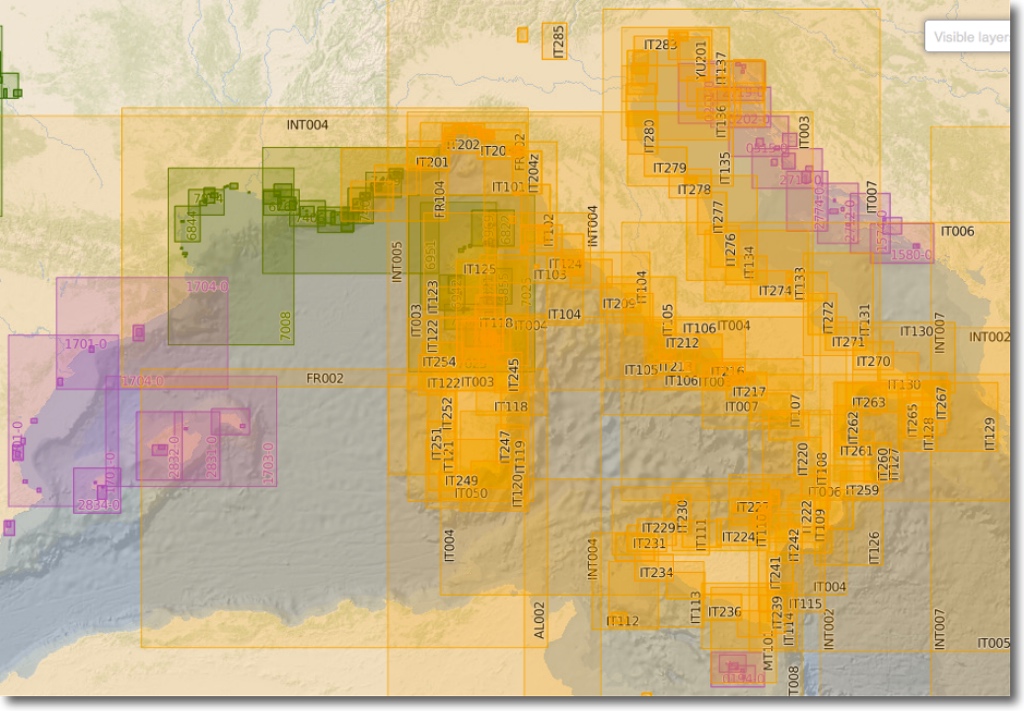 With UKHO covering Spain in part, Balearic Islands and Croatia in detail, the SHOM which covers in detail the coasts of France and Corsica, Navimap completes the western Mediterranean basin in detail. We are no longer waiting for the negotiations to succeed for Greece and Turkey.
With UKHO covering Spain in part, Balearic Islands and Croatia in detail, the SHOM which covers in detail the coasts of France and Corsica, Navimap completes the western Mediterranean basin in detail. We are no longer waiting for the negotiations to succeed for Greece and Turkey.
Display simulation data in instruments data labels
A Latest Update 2.0.16 will respond in a few days to a pressing request to display simulation and routing data in the instruments, Alternative to actual data. It will be done. The data will automatically be displayed in yellow (not to be confused with the actual blank data) as soon as a target will be enabled on the simulated route or routing.
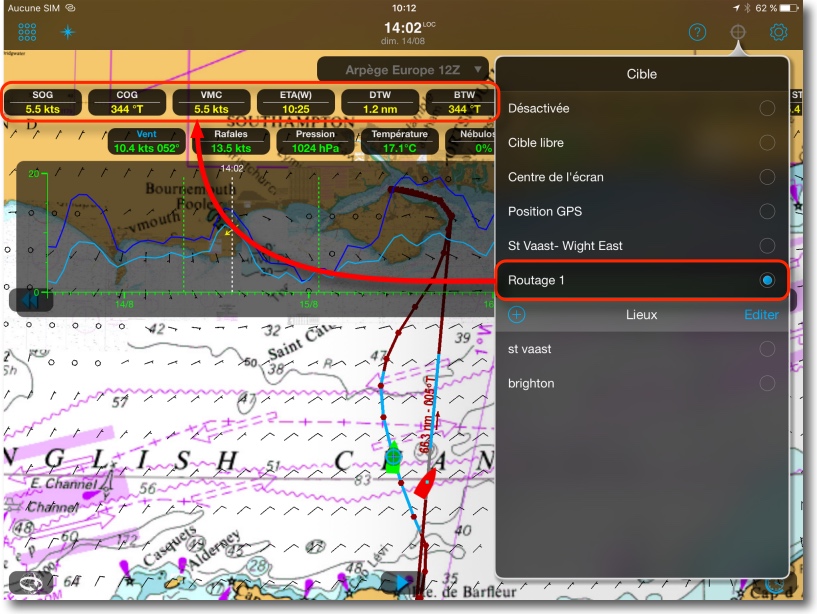 Here is a set of functions which enrich this amazing application, to which are added “under the hood” numerous functional improvements for ever greater efficiency.
Here is a set of functions which enrich this amazing application, to which are added “under the hood” numerous functional improvements for ever greater efficiency.
———
(¹) See free tutorial for explanation of acronyms.
(²) The company APP4NAV is a referenced developer of Iridium GO!, which allows it to integrate control of the Iridium GO device into the application! and thus manage the connection to its own servers. This opens access to all other models available like ARPEGE, AROME, aso.
———


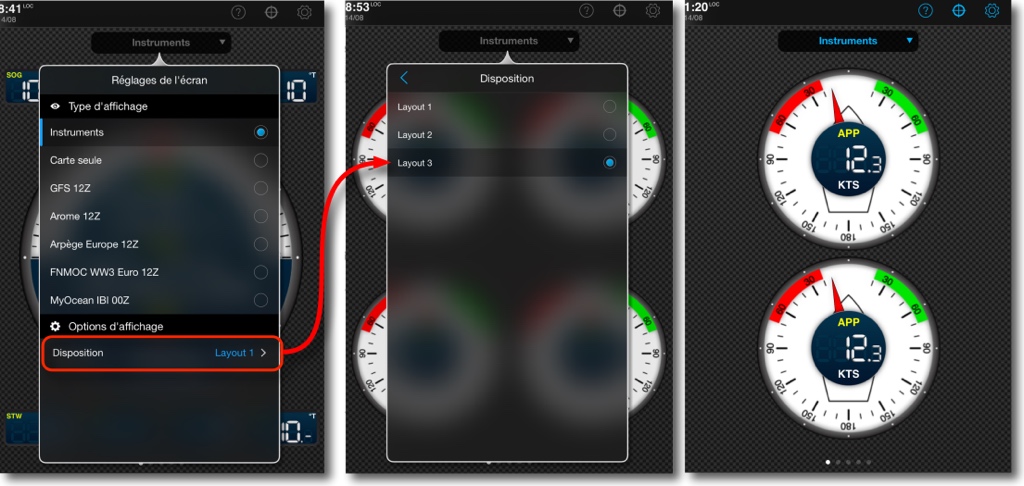
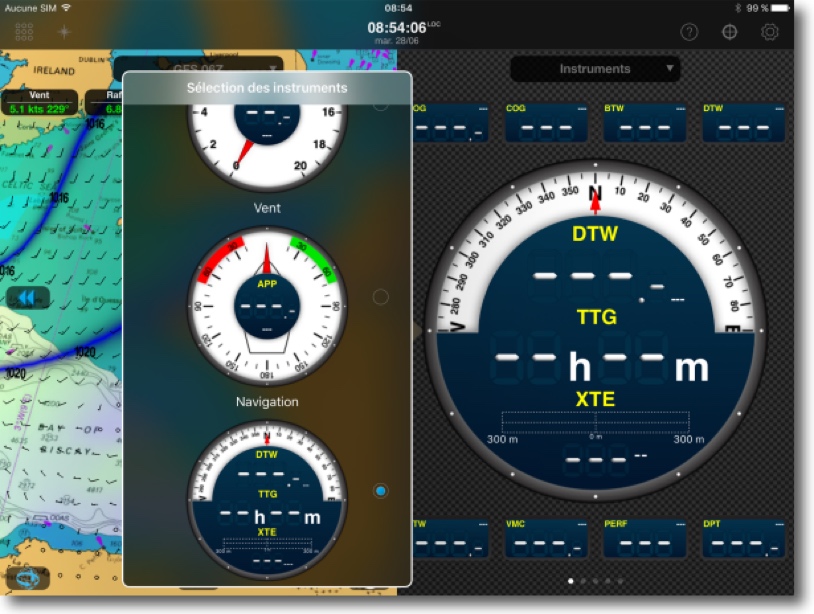
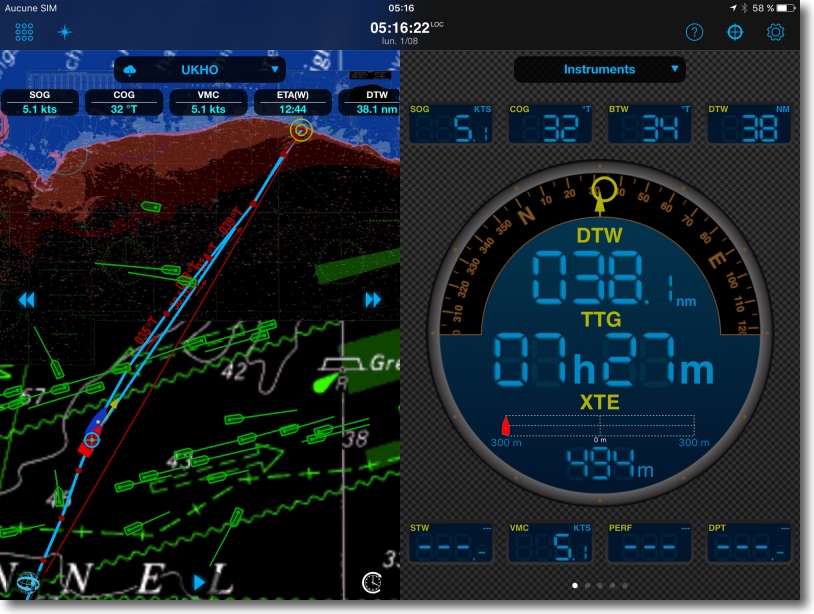
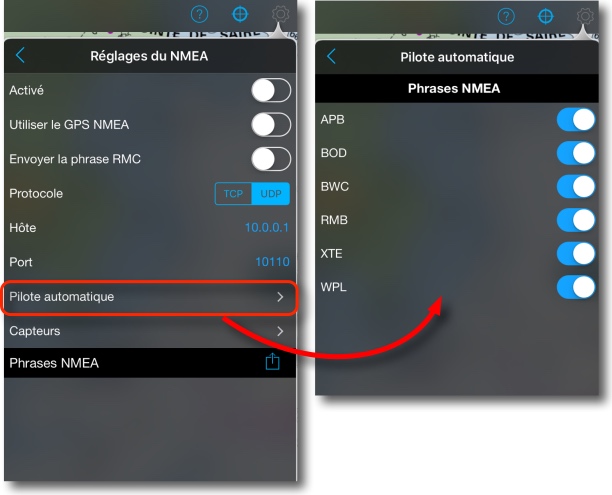
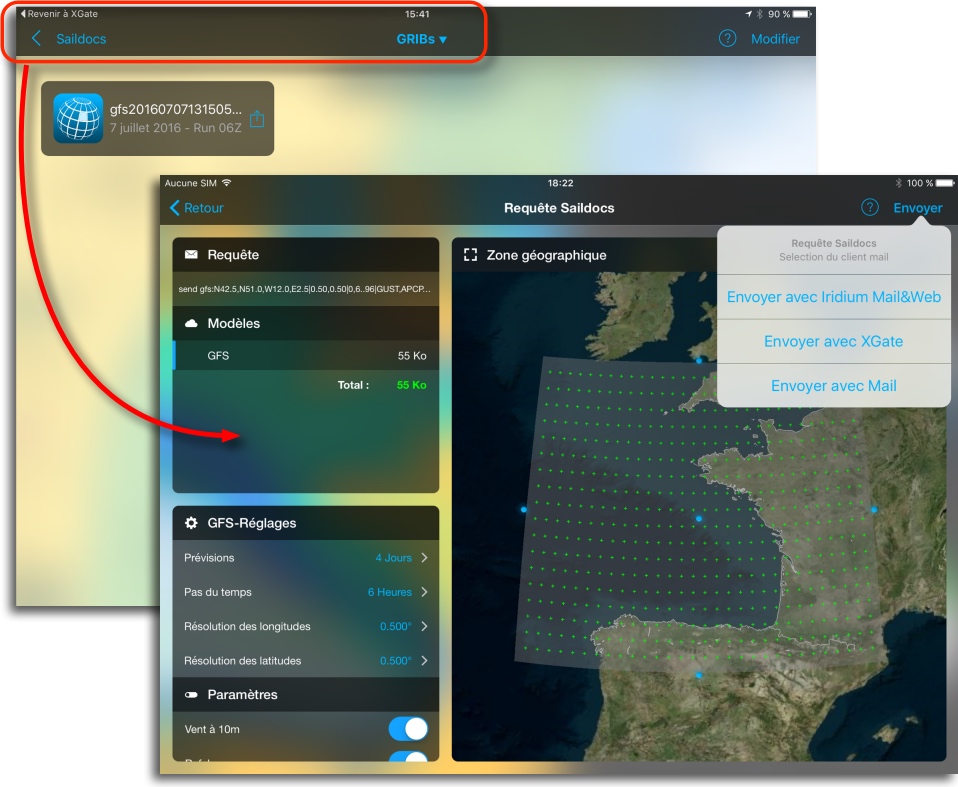
Can we finally have the GPS coordinates of the target??
You have to ask the developer, not mine !
Nice improvements, the trace is a real plus. Dommage que la mise à jour du livre « Navigation et routage météo » ne se fait pas sur iBooks.
Si la maj est absente dans iBooks > Achats > Mise à jour, alors il faut supprimer le book et le télécharger de nouveau.
Savez vous si les infos moteurs nmea 2000 de type RPM et Fuel rate etc. pourrons être affichés ??
Il vaudrait mieux le demander au développeur ! support@weather4d.com
Effectivement cet email marche mieux 🙂
Réponse ce matin même:
Le fuel rate n’est pas géré car W4d ne supporte pas le nmea 2000 nativement mais via une conversion en nmea183.
Le RPM fonctionne en revanche.
Bravo!! Merci for the update!
Been testing a few days and improvements are multiple. Well done.
My little quibble: the zoom level on which it is possible to cache charts is really to high to be practical for des courses au large
For a short off-gsm-network crossing of, let’s say, only 100 nm one needs to select, at minimum, 6 successive areas to have downloaded the necessary chart tiles. That’s not very appealing and practical.
Dear developers, please add a graphical overview of the charts in cache and/or switch on manual caching at a much lower zoom level. (300x300nm? or more?).
Though it will not stop me from using the app of course. I think it’s brilliant and versatile.
merci
p
Application très sympa. J’utilise encore en double avec iNavx, notamment pour les infos AIS des navires que l’on croise.
Pour la carto je reviens des baléares Ménorque, Majorque) et Barcelone, la couverture UKHO reste très incomplète, pour zoomer je passe sur iNavx avec la carto Navionics. Dommage mais pas du ressort de Weather4D 🙂
Pour chipoter, il faudrait encore :
– possibilité de définir les limites de vitesses de vent au portant et au près pour le calcul de la route
– possibilité de définir non seulement la limite de vitesse du voilier (selon polaires par rapport au vent vrai) à laquelle on décide de démarrer le moteur (in example : en dessous de 1.5 noeuds de vitesse fond on démarre le moteur…) _ET_ à quelle vitesse le voilier avance avec le moteur en marche (in example : 6 knots)
…. pour chipoter hein.
rectification :
«possibilité de définir les limites de vitesses de vent APPARENT au portant et au près pour le calcul de la route»
(étant donné que la nouvelle version peut afficher la simulation des données des instruments, c’est donc possible 😉 )
..
C’est pour chipoter. Je me doute que les développeurs ne manquent pas d’idées.
En tout cas chapeau bas pour le travail déjà accompli.
Je trouve que différencier la vitesse fond mini à laquelle on allume le moteur, avec la vitesse que l’on fait quand on allume le moteur, manque également cruellement …
BRAVO